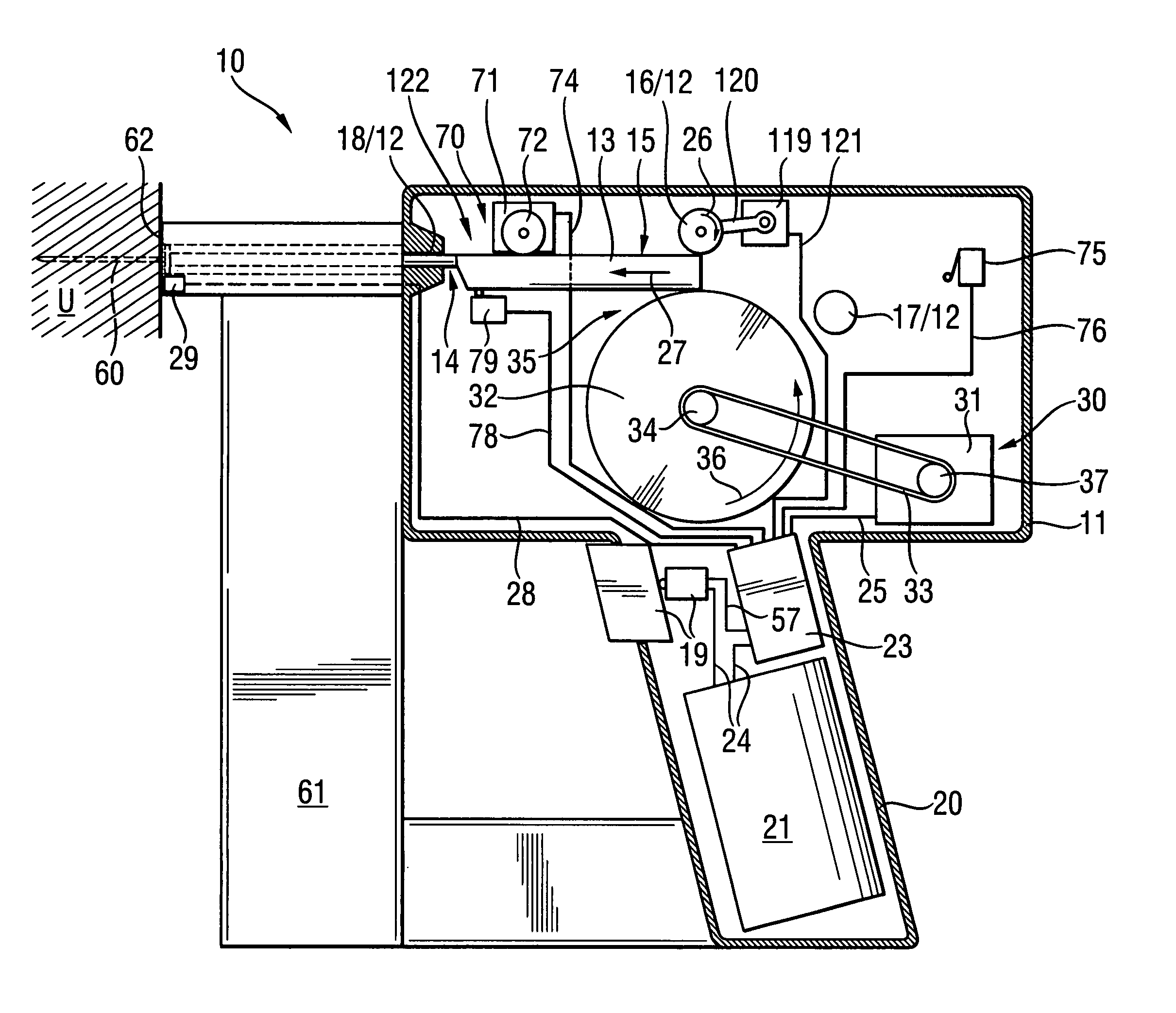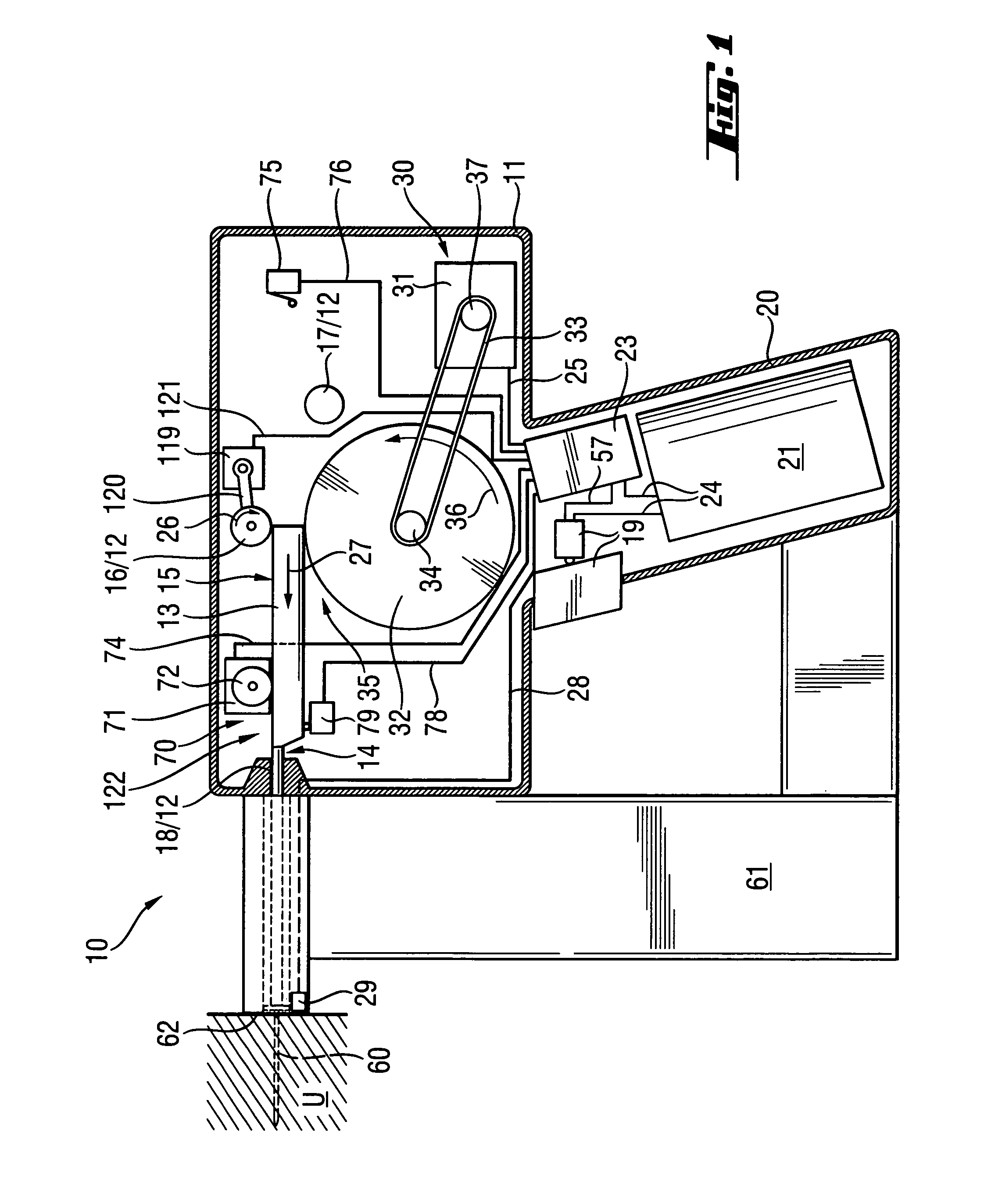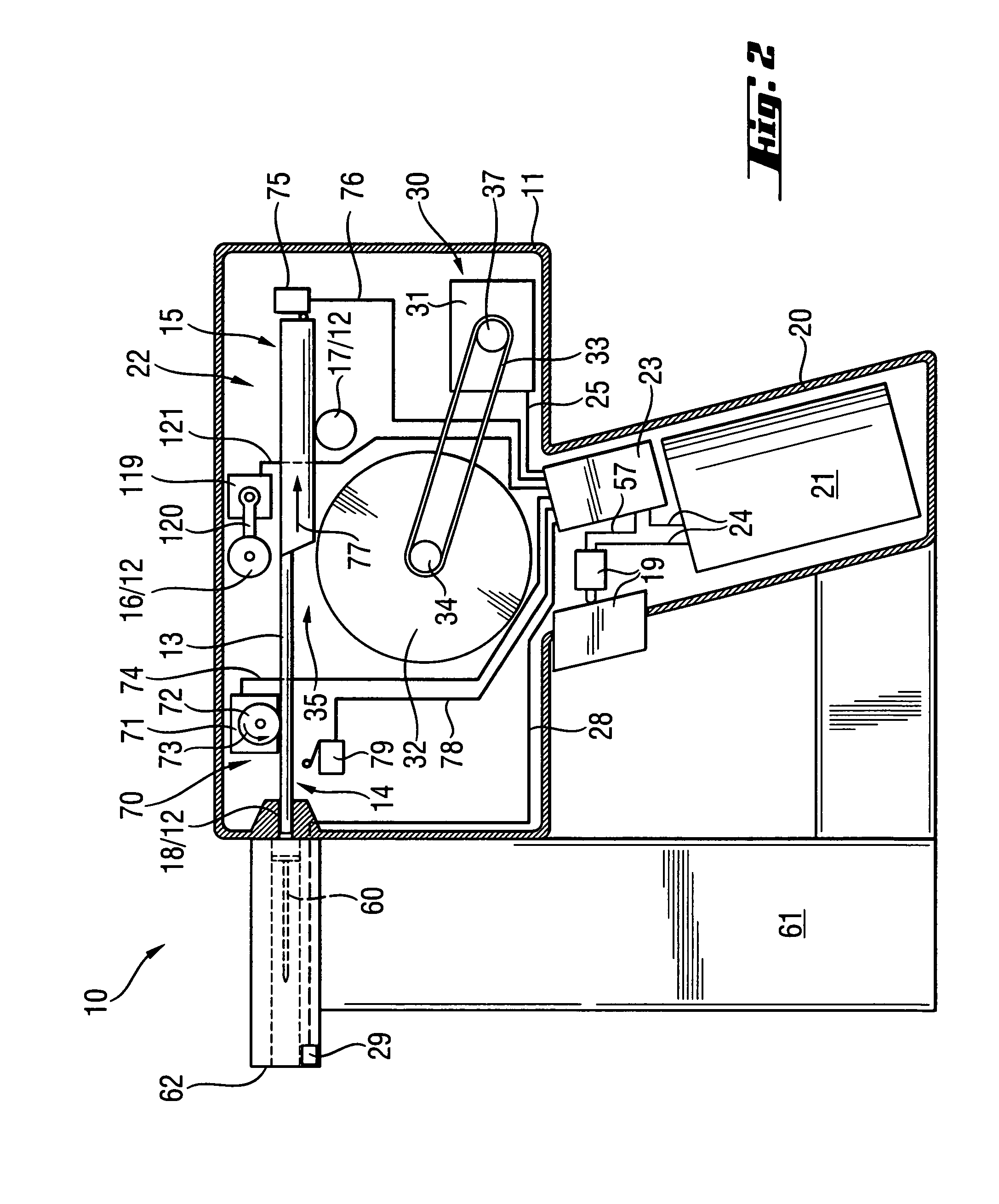Electrically operated drive-in tool
a drive-in tool and electric motor technology, which is applied in the direction of manufacturing tools, nailing tools, tapering tools, etc., can solve the problems of high cost, high cost, and low practicality of the return wheel switch mechanism, and achieve reliable return of the driving ram, high driving energy, and adequate useful life
- Summary
- Abstract
- Description
- Claims
- Application Information
AI Technical Summary
Benefits of technology
Problems solved by technology
Method used
Image
Examples
Embodiment Construction
[0022]The drive-in tool 10, which is shown in FIGS. 1 and 2, has a housing 11 and a drive unit, designated in its entirety with a reference numeral 30 and which is arranged in the housing 11 for driving a driving ram 13 which displaceable in a guide 12. The guide 12 has a guide roller 17, contact pressing means 16 which is formed as a contact pressing roller, and a guide channel 18. A fastening element magazine 61, in which fastening elements 60 are loaded, is arranged at the end of the guide 12 in the driving direction 27 so as to project laterally therefrom.
[0023]Further, the drive-in tool 10 has a handle 20 on which a trigger switch 19 is arranged for triggering a drive-in process with the drive-in tool 10. A power supply, designated in its entirety by 21, is arranged in the handle 20 and supplies the drive-in tool 10 with electrical energy. The power supply 21 has at least one battery in the present case. The power supply 21 is connected to a control unit 23 and to the trigger s...
PUM
 Login to View More
Login to View More Abstract
Description
Claims
Application Information
 Login to View More
Login to View More - R&D
- Intellectual Property
- Life Sciences
- Materials
- Tech Scout
- Unparalleled Data Quality
- Higher Quality Content
- 60% Fewer Hallucinations
Browse by: Latest US Patents, China's latest patents, Technical Efficacy Thesaurus, Application Domain, Technology Topic, Popular Technical Reports.
© 2025 PatSnap. All rights reserved.Legal|Privacy policy|Modern Slavery Act Transparency Statement|Sitemap|About US| Contact US: help@patsnap.com



